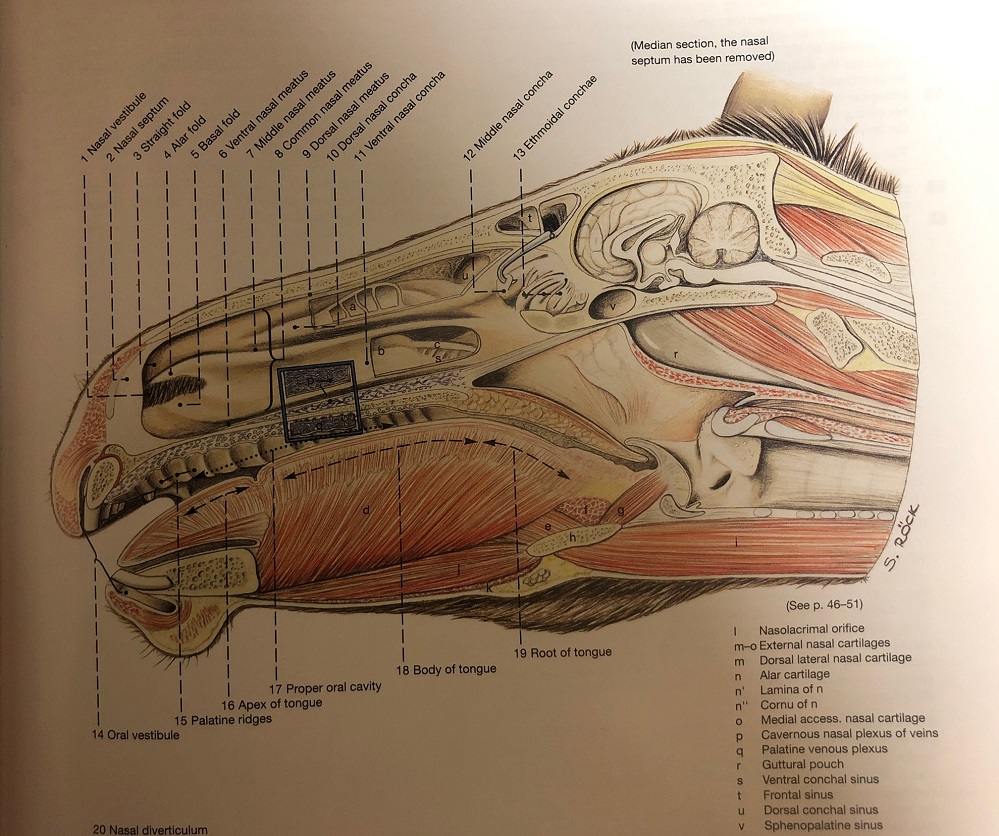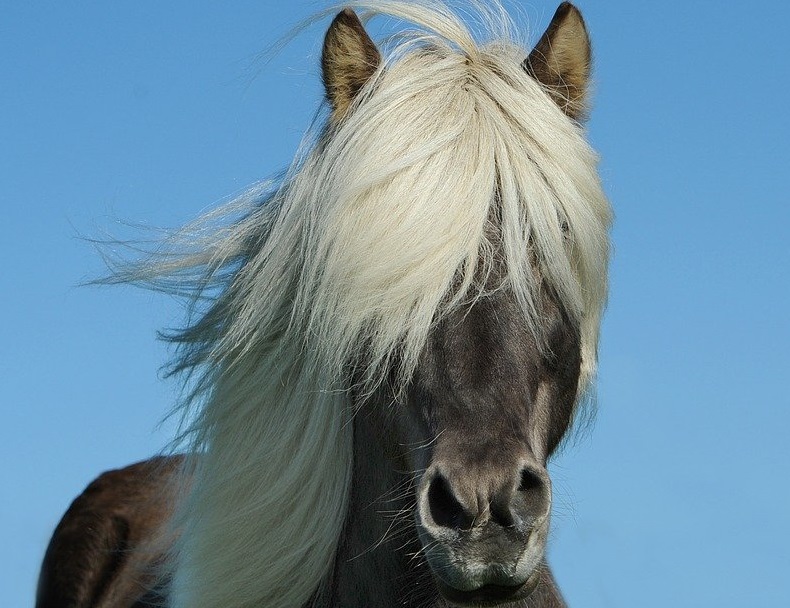Tuesdays with Tony
I’m not even going to pretend I didn’t straight up steal this week’s blog from Dr. Lacher. I was listening in on a recent podcast she did on airway issues. I found it pretty fascinating, so I’m going to summarize it here for you. If you like podcasts, and you should, because they’re a pretty great thing, check out Straight From the Horse Doctor’s Mouth. If you have no idea what a podcast is, you should follow these steps: 1) join us here at the Clinic in 2020, and 2) ask anyone of my minions to show you how to get to podcasts on those phones you humans worship. Anyway, on to airways.
Anatomy of an Airway
Let’s start with the fact that horses are amazing athletes. Fun fact of the day: horses increase their oxygen consumption 40 times when running flat out. Compare that to humans who can only increase oxygen consumption by about 7 times. There’s no value for cats, since science hasn’t figured out how to motivate us cats to exercise during a study. Anyway, using that much air takes a whole lot of really cool anatomy goings on to make it work. Let’s talk about that anatomy.

Picture from Anatomy of the Horse by Budras, et al
Things start at the nose. Those nostrils can open very, very wide to help scoop tons of air into that big old nose. From there, air heads back to the pharynx and larynx. The larynx is the voice box, and the pharynx is the area kinda behind your mouth but in front of your voice box. In humans, and cats, it’s not a very large area. In horses, it’s downright cavernous. Air continues down the trachea, also called the windpipe for obvious reasons, and then down into the lungs. In the lungs, air is funnelled into progressively smaller and smaller airways until it gets into the alveoli. Alveoli look like little grape bundles. This is where oxygen goes from the air to the blood through walls that are often only two cells thick! That’s like 1/1000th the thickness of one of my hairs, and I’m not talking whiskers. That’s incredibly thin!

Potential Problem Areas
I swear horses were designed to have problem areas everywhere. Turns out the airway is no exception. I’m glad you humans find them pretty, or horses would really be in trouble. Let’s go through the airway trouble spots one by one.
- Those nostrils. Sure, they can open wide, but sometimes they don’t do that the right way. If the nostrils don’t open and stay open, all that air rushing in and out hits a wall and slows down. This reduces the amount of air that can get to the lungs, thus reducing how fast and/or how long a horse can perform. Things like FLAIR strips can help this.
- That big old nose itself. It’s not usually a problem area, but if there’s any swelling, or growths like nasal polyps, air flow can be pretty quickly restricted.
- The soft palate. If you fold your tongue backwards and feel the top of the very back of your mouth, that’s the soft palate. In horses, it’s really long and usually sits below the bottom edge of the voice box. It’s the reason horses can’t breathe through the mouth. It can also decide it doesn’t want to be where it’s supposed to be. It pops up above that bottom edge to flap in the breezes blowing by. As you can imagine, this doesn’t help airflow at all! There is a pretty effective surgery for this called a Tie Forward.
- The pharynx. This guy has to withstand massive pressures as air goes screaming by on its way in and out. It’s mostly soft stuff like mucosa and muscle with only some little tiny bones on the bottom called the hyoid apparatus. This means those muscles have to work like crazy to hold the pharynx open during breathing. Sometimes they just can’t even. We call that pharyngeal collapse. It’s tough to manage since there’s no surgery, medication, supplement (little cat joke there, supplements are never the answer), bit, or other gadget that can manage this.
- The larynx. Oh, the larynx. This is where Roarers happen. On either side of the larynx are the vocal folds. These flaps move in and out to create the vibrations that cause the much-loved whinny. I use mine to demand, I mean request, food from my humans. Either way, the left one is powered by a nerve that does some really strange meanderings to get where it’s going. The nerve starts at the base of the skull, runs down to the heart, does a u-turn and comes back up the left side of the larynx. Given the long journey, it has a lot of opportunities for bad things to happen. When the nerve quits working, that flap stops opening properly. That creates turbulence when your horse is breathing, and that sounds like roaring. There’s a surgery for this one too. It’s called a Tie Back. Those surgeons are so original with their names.
- The trachea. This one doesn’t cause too many problems for most horses. Minis are known for getting a collapsing issue.
- The lungs. Oh, the lungs. That teenie, tiny little membrane that allows horses absorb oxygen really efficiently so they can run fast, also does a really bad job at keeping the blood on the correct side of the wall. This is where “bleeding” comes from. If a horse runs enough times, and hard enough, bleeding will happen. It takes management and good training to keep this to a minimum. Sure, there’s Lasix, but did you know even a subtle lameness can massively increase the chances your horse will bleed? Talk to my Docs about making sure you’ve got a good plan to minimize the chances of bleeding. Medications are likely going to be part of it, but there’s a whole lot more to it.
Moral of the story: horses can really mess up their airways in a lot of different ways. If your horse isn’t performing like they should, don’t just head to Dr. Google. Talk with one of my Docs about what’s going on. They will help you come up with a cause, and a treatment plan. Dr. Google can’t do that!
Now then, about that podcast. I’m sure you want more information about airways, so I’m going to show you where you can listen to the podcast without having to download anything fancy on your phone. All you have to do is click this link: Straight from the Horse Doctor’s Mouth. That will take you to the podcast page on our website. Then, you just scroll through the episodes. When you see one you want to listen to, just click Play. Make sure you turn your volume up.
Until next week,
~Tony
Tuesdays with Tony is the official blog of Tony the Clinic Cat at Springhill Equine Veterinary Clinic in Newberry, Florida. If you liked this blog, please subscribe below, and share it with your friends on social media! For more information, please call us at (352) 472-1620, visit our website at SpringhillEquine.com, or follow us on Facebook!
[jetpack_subscription_form title="Subscribe to Whinny's Wisdoms"]

